Soane’s style: pushing the boundaries
Soane’s interest in Classical architecture was sparked by the award of a three- year travel scholarship to Italy whilst a student at the Royal Academy. On returning to England, his designs began to illustrate the influence of his tour, particularly in the late 1780s and early 1790s when he began to experiment with top and high lighting. Although his increasing success as an architect brought him recognition it also earned him harsh criticism.
Soane’s first building projects at the Royal Hospital Chelsea – the conversion of Walpole House into an Infirmary, an extension to the existing Clerk of Works’ house and a new stable block – were among those buildings most vilified by his critics. His son George’s vicious and public critique angered and distressed Soane, who later blamed George for his wife’s death.
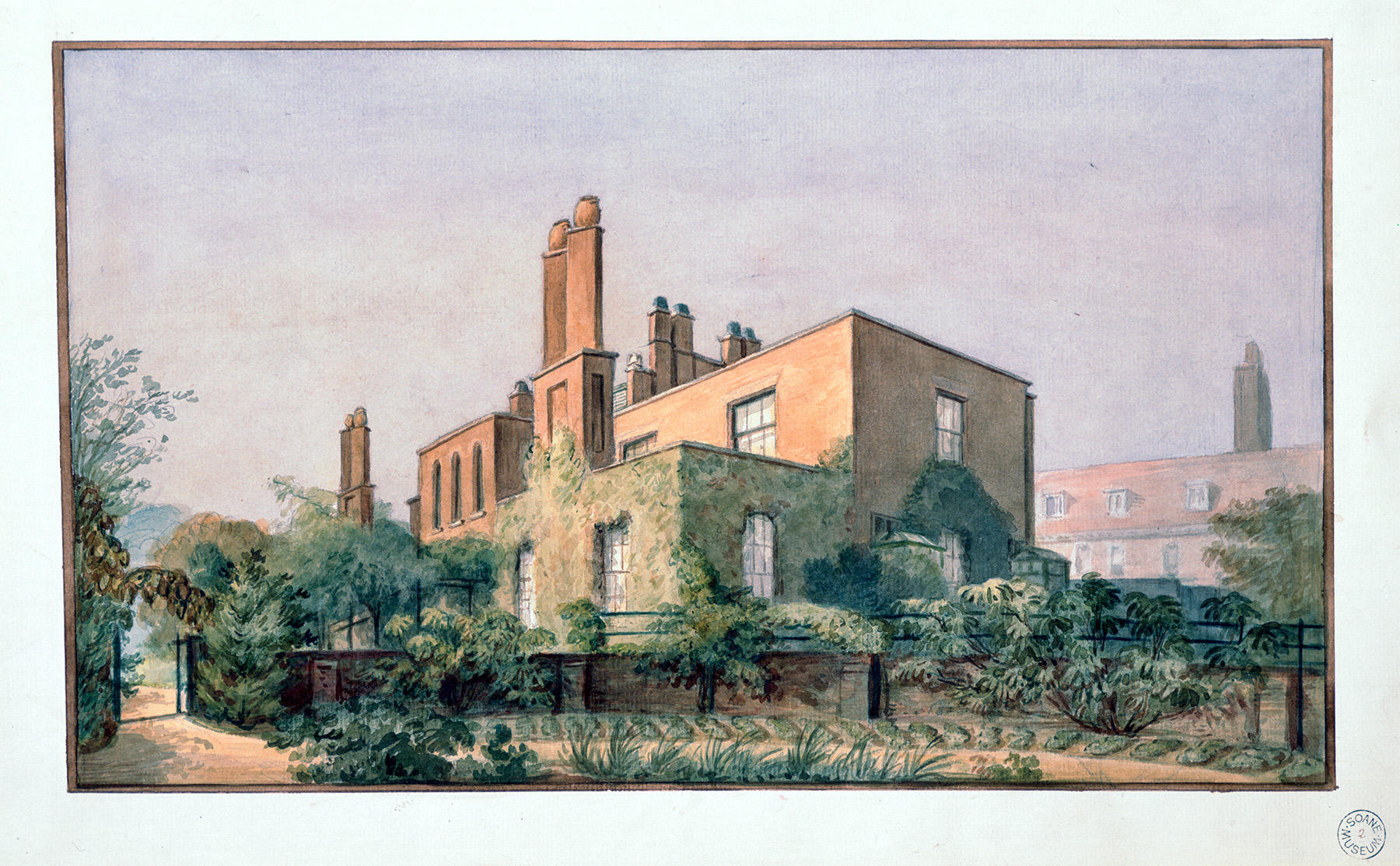
Soane’s Clerk of Works’ house was described by his son as a ‘monster in the art of building’, with the Infirmary ‘not a jot behind it in absurdity’.
Members of the Royal Hospital’s Board of Commissioners were also concerned, finding Soane’s style too modern and divergent from Wren's. As a result, Soane’s later work at the Hospital, such as the Secretary’s Offices, is more in keeping with Wren’s proportion and style, at least externally. Soane maintained that he had never sought to rival his great predecessor, but to complement him.
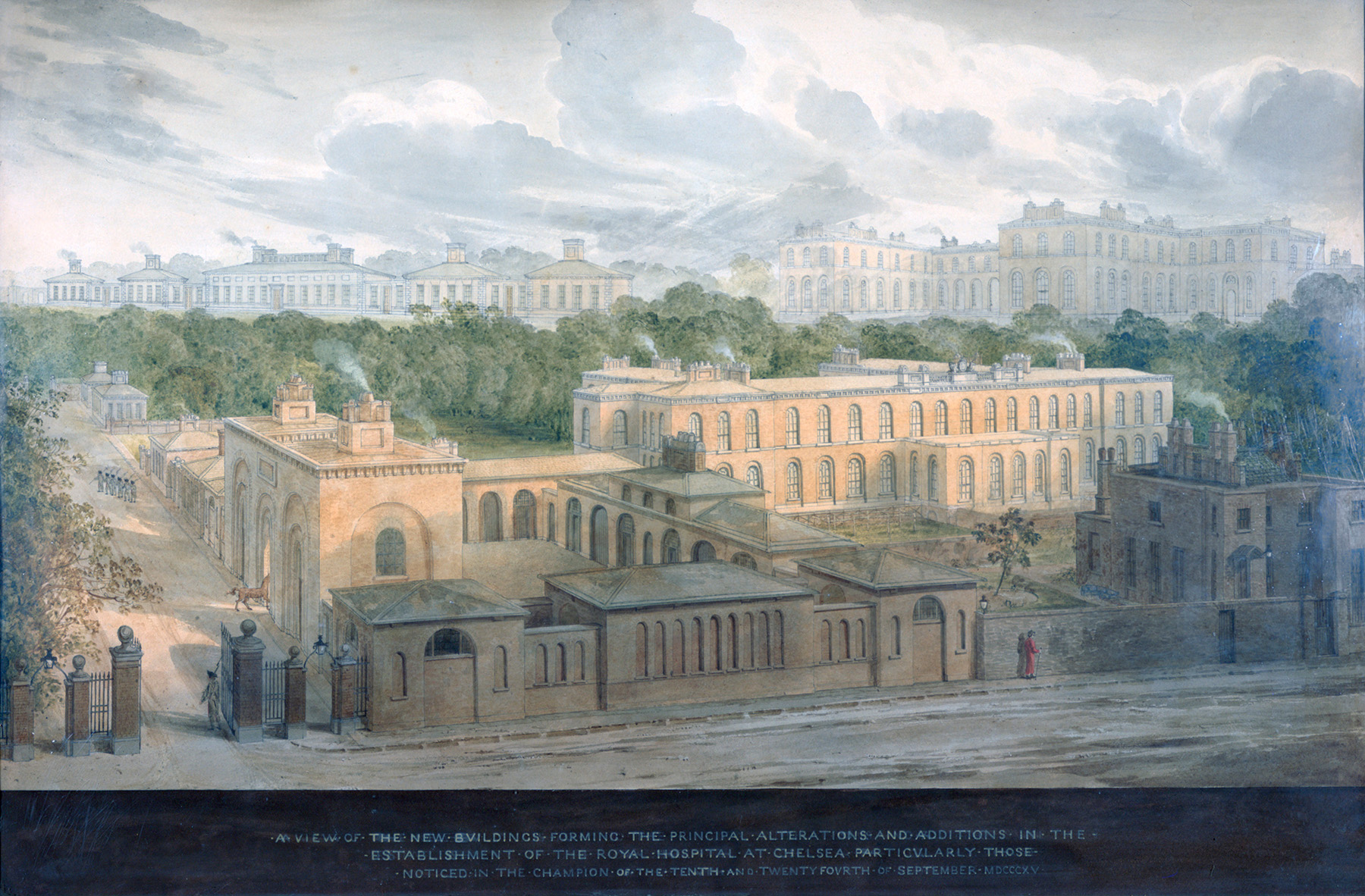
Soane’s Infirmary dominates the centre of this watercolour with his stables to the left and the Clerk of Works’ house to the right. In the background on the left is the later Secretary’s Office with exterior design aligned with Wren’s earlier buildings.
Stables at the Royal Hospital
Soane’s stables replaced those built by Wren. The demolition of Wren’s stables was deemed necessary to improve the ventilation of the much-needed new Infirmary (completed 1812), designed by Soane.
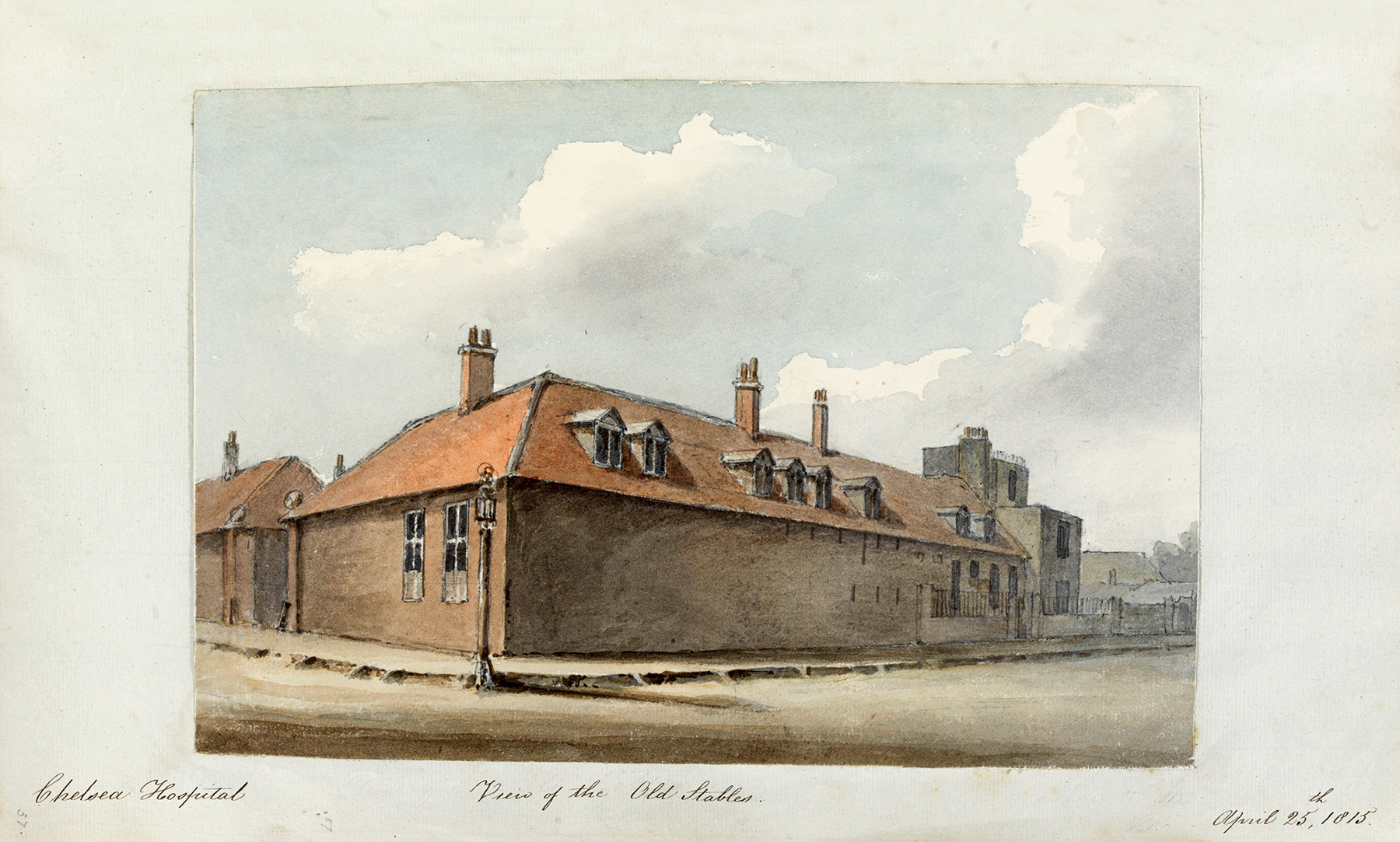
Wren’s stables housed 36 horses and had ten coach houses. It was over twice the size of Soane’s yard.
View of the Back front of the Old Stables, Chelsea Hospital’, 1815.
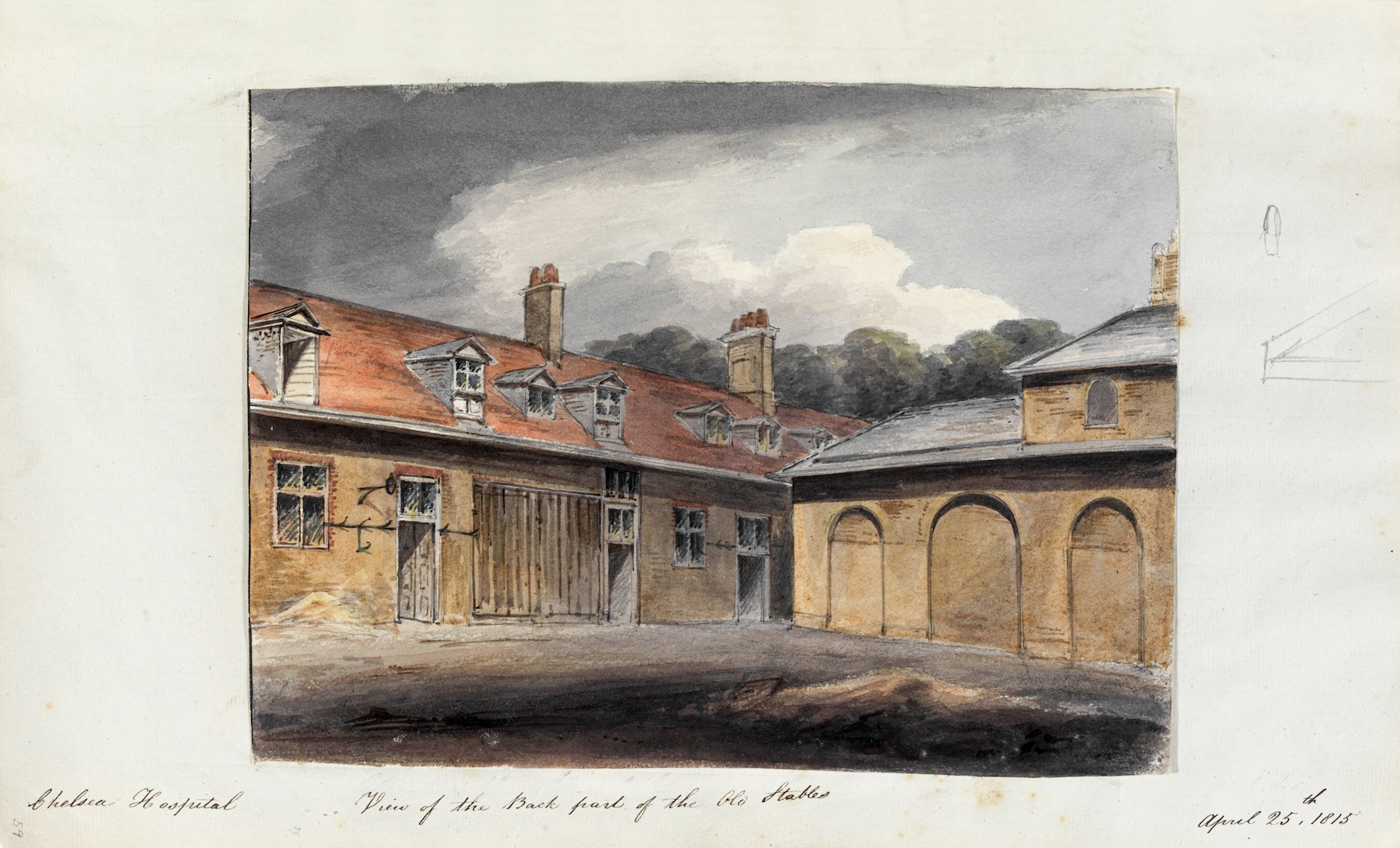
Work in progress: you can see part of Soane’s new stables (on the right), almost abutting Wren’s stable buildings before they were demolished.
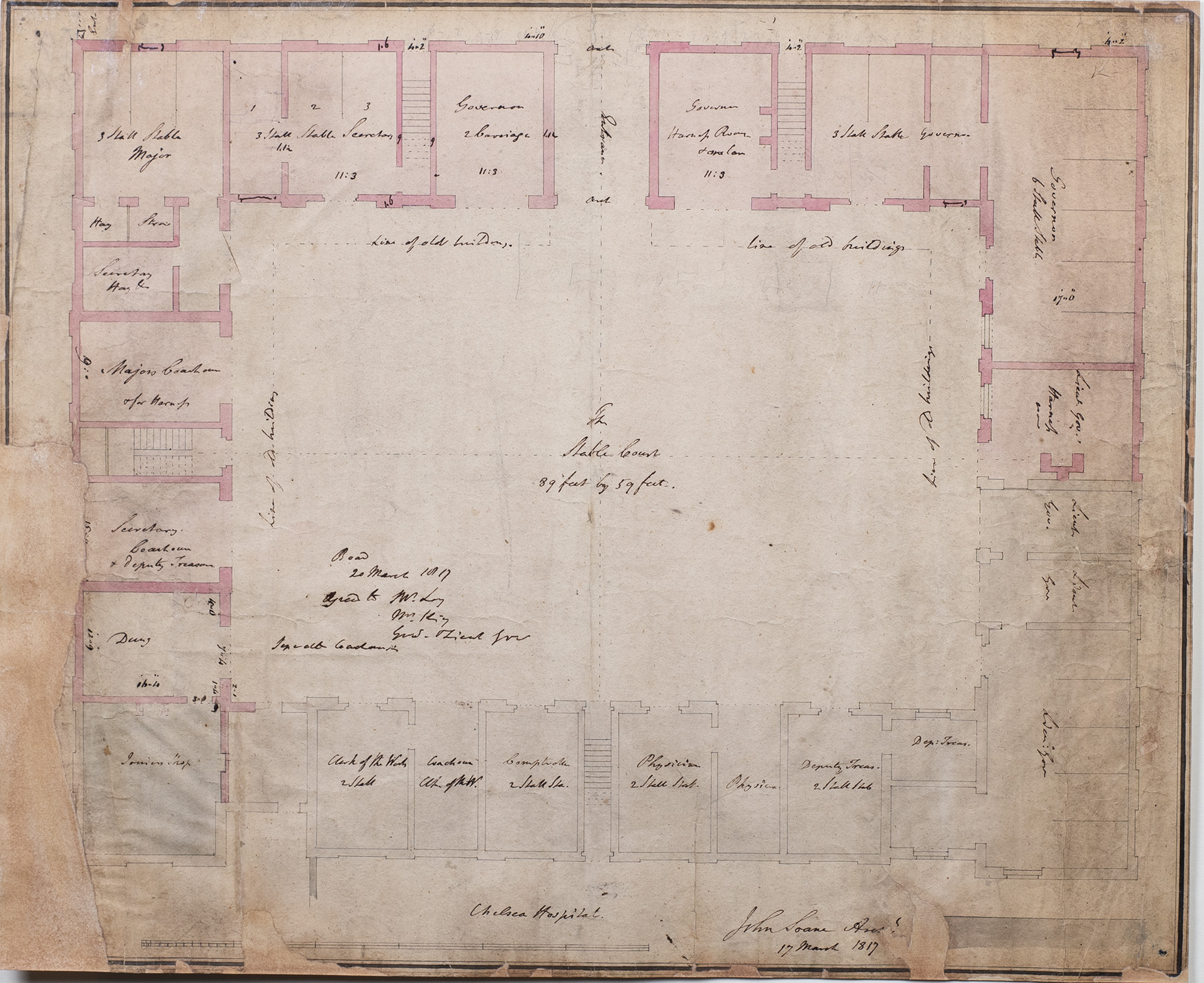
Soane’s compact stable block provided attic accommodation where stable boys are believed to have slept – perhaps alongside space for hay storage.